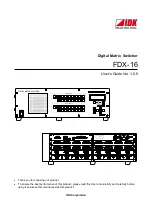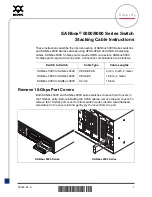
xStack DGS-3600 Series Layer 3 Gigabit Ethernet Managed Switch CLI Manual
335
10.0.0.0 20.0.0.0 10 60 None DOWN
10.1.1.1 20.1.1.1 10 60 None DOWN
Total Entries : 2
OSPF Area Aggregation Settings
Area ID Aggregated LSDB Advertise
Network Address Type
--------------- ------------------ -------- ---------
244.0.0.6 11.0.0.0/8 NSSA-EXT Disabled
Total Entries : 1
OSPF Host Route Settings
Host Address Metric Area ID
--------------- ------ ---------------
10.3.3.3 1 10.1.1.1
Total Entries : 1
DGS-3627:5#
create ospf area
Purpose
Used to create an OSPF area.
Syntax
create ospf area <area_id> type [normal | stub | nssa {translate
[enable | disable]}] {stub_summary [enable | disable] | metric
<value 0-65535>}]
Description
This command is used to create an OSPF area and configure its
settings.
Parameters
<
area_id>
−
The OSPF area ID. The user may enter a 32-bit number in
the form of an IP address (xxx.xxx.xxx.xxx) that uniquely identifies the
OSPF area in the OSPF domain.
type
−
The OSPF area mode of operation
−
the user has three choices
to choose from to define the area created here.
•
normal
– Choosing this parameter will define the OSPF area
created here as a normal area.
•
stub
– Choosing this parameter will define the OSPF area
created here as a stub area.
•
nssa
– Choosing this parameter will define the OSPF area
created here as an NSSA (Not So Stubby Area) area.
•
translate [enable | disable]
– Enable this parameter to
translate Type-7 LSAs into Type-5 LSAs, so that they
can be distributed outside of the NSSA. The default is
Disabled. This field can only be configured if
nssa
is
chosen in the
type
field.
stub_summary [enable | disable]
−
Enables or disables the OSPF area
to import summary LSA advertisements.
metric <value 0-65535>
−
The OSPF area cost between 0 and 65535. 0
denotes that the value will be automatically assigned. The default
setting is 0. For NSSA areas, the metric field determines the cost of
traffic entering the NSSA area.
Restrictions Only
administrator-level
and operator-level users can issue this
command.
















































